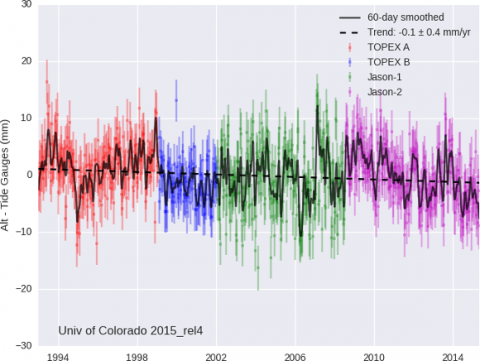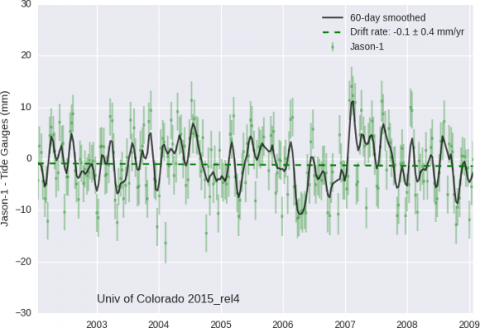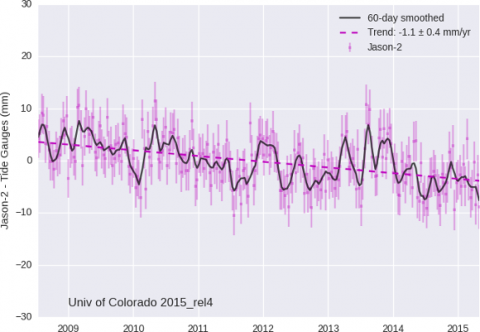Changes to the altimeter can be monitored by comparing the altimeter-derived sea surface heights to sea surface heights measured at tide gauges. This technique is not used to calibrate the altimeter in any way, but it is valuable in diagnosing and correcting altimeter drift.
The method of producing the tide gauge estimates of altimeter drift that we report here is described in detail by in Mitchum (2000), and will not be discussed in full here. Briefly, the method works by creating an altimetric time series at a tide gauge location, and then differencing this time series with the tide gauge sea level time series. In this difference series, ocean signals common to both series largely cancel, leaving a time series that is dominated by the sum of the altimetric drift and the land motion at the tide gauge site. Making separate estimates of the land motion rates and combining the difference series from a large number of gauges globally results in a times series that is dominated by the altimeter drift. Since the difference series at separate time gauge locations have been shown to be nearly statistically independent, the final drift series has a variance much smaller than any of the individual series that go into it. Because of the relatively large number of degrees of freedom, this method outperforms comparisons from dedicated comparison sites, although it is only a relative comparison, meaning that it cannot determine any absolute bias. It can, however, detect change in a bias, either a drift or a step change. For the tide gauge comparisons, global mean sea level during the period of TOPEX-A operation is used as zero level for TOPEX-B, POSEIDON, and Jason.
Ideally, one would want to include all of the available tide gauges in the comparison. A number of gauges, however, have a significant lag in reporting of records and are not available for the Jason comparison. On the other hand, some others do not extend backward through most of the T/P mission. We have restricted the ~100 available gauges to a set of 64 near real-time stations that span the majority of both the T/P and Jason missions, and will therefore provide a relatively consistent comparison for both.



